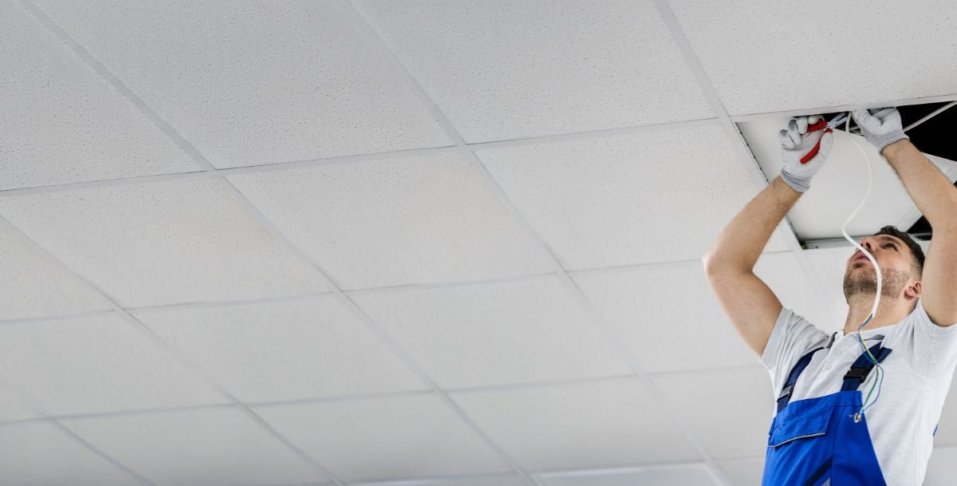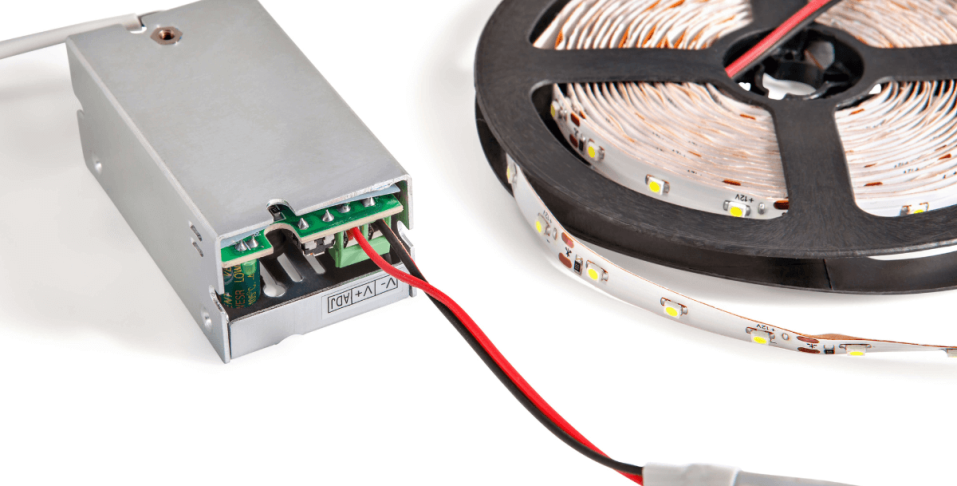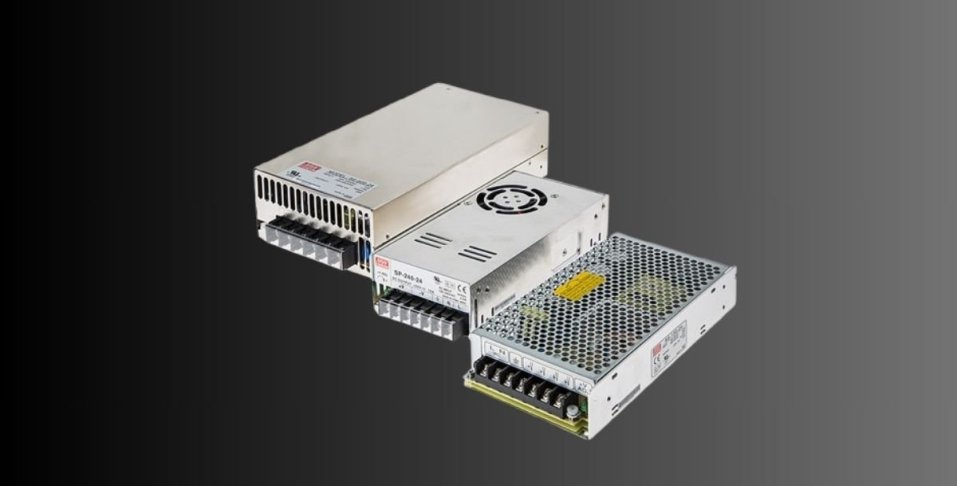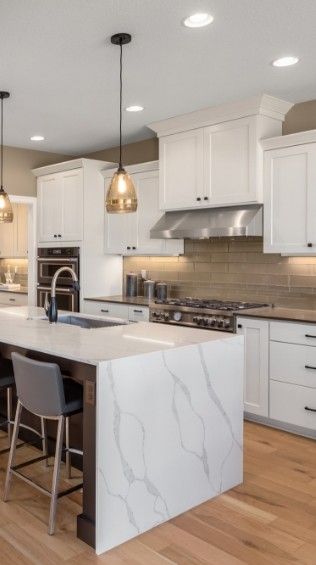What is an LED Driver?
An LED driver is a power supply specifically made to power LED lights. It converts high-voltage AC into low-voltage DC and can provide either constant current or constant voltage depending on the design and placement of the LED array it powers. By delivering stable current or voltage, preventing damage, and maximizing performance, it ensures safe, efficient operation.
Key Functions of LED Drivers:
-
Power Regulation: Provides precise current or voltage to avoid overdriving or under-powering.
-
Compatibility: Tailored to specific LED requirements for optimal performance and longevity.
-
Dimming Control: Enables brightness adjustments using methods like TRIAC (MLV and ELV), PWM, 0-10V, or resistive/potentiometer dimming.
-
Electrical Protection: Shields LEDs and power supplies from voltage spikes, overheating, and short circuits.


Why LED Driver Placement Matters
The placement of LED drivers in an LED installation significantly impacts the overall performance, efficiency, and lifespan of the LED lighting system. Well-designed and mindful driver placement ensures proper power delivery and consistent light output, minimizing potential risks that could compromise the lighting system.
Factors to Consider When Designing LED Driver Placements
Thermal Management
-
Poor LED driver placements can lead to inadequate heat dissipation, causing the driver to overheat. Overheating reduces efficiency and shortens the lifespan of both the driver and the LED components.
-
Proper spacing of LED drivers, use of heat sinks, and thermal protection measures effectively manage heat and maintain consistent performance. Large LED drivers incorporate fans into the device to keep it operating at a cool enough temperature.
Electrical Efficiency
-
Suboptimal placements can introduce increased resistance, power losses, or noise interference, reducing the driver's electrical efficiency.
-
Well-designed and optimized placements ensure minimal power loss, lower voltage drop, and smooth operation by positioning components to reduce resistance and improve power flow.
Wiring and Connections
-
Proper wiring and secure connections are essential to prevent voltage drop, power loss, flickering or potential safety hazards like short circuits and overheating.
-
A well-organized placement uses high-quality connectors and cables with appropriate sizing to ensure reliable power transmission, minimize energy loss or fluctuations, and eliminate flickering.
Longevity of LED Components
-
Poor placement designs, where power supplies are spaced too close or too far apart, can cause uneven power delivery, leading to overdriving or underdriving LEDs. Overdriving can result in the possible premature failure of the LEDs.
-
A balanced placement of LED drivers spacely effectively apart ensures stable current or voltage delivery, maximizing the lifespan of the lighting systems.
Centralized vs. Distributed Power Supply Layouts for 12V and 24V Systems
When designing the power supply placement for a commercial lighting project, one key decision is whether to use a centralized or distributed system. Each approach has distinct advantages and considerations.
Centralized Power Supply Layouts
A single, large power supply unit (e.g., 150W, 300W, or 600W) can handle multiple fixtures, simplifying wiring and reducing the need for multiple outlets or circuits. This approach works well for projects with grouped lighting zones or fixtures in close proximity (e.g., under-cabinet lights in a single kitchen or a row of display case lights), as long as the total wattage of the connected fixtures does not exceed the power supply's capacity. Be sure to include a 20% safety margin to avoid issues such as overheating.
Centralized power supply systems require careful planning to manage voltage drop over longer distances, particularly in 12V or 24V systems. In centralized power supply configurations, it is typically advised to use 24V power supplies over 12V by default, since wire runs tend to be longer. Using thicker-gauge wiring can help mitigate energy loss.
Distributed Power Supply Layouts
Distributed power supply placements minimize voltage drop by placing smaller power supplies (e.g., 60W, 90W, or 120W) closer to individual fixtures or zones, ideally within 5–10 feet of the fixtures for low-voltage systems (e.g., 12V or 24V). This approach offers greater design flexibility and is ideal for large projects with scattered fixtures.
Ensure that each power supply's wattage capacity exceeds the total wattage of the connected fixtures, including a safety margin of 20% to maximize efficiency and prevent overheating. Voltage drop is one of the main reasons people opt for distributed power placements in 12V systems, whereas 24V systems can maintain proper light output over longer runs without dropping voltage.
Best Practices for Installing LED Drivers in Commercial Lighting Projects
1. Minimize Distance Between Power Supplies and Fixtures
To reduce voltage drop, place power supplies as close as possible to the LED fixtures. For low-voltage systems, such as 12V or 24V setups, aim to keep the wire length between the power supply and the fixture under 10–15 feet for standard wire gauges (e.g., 16 or 18 AWG). For longer runs, consider using a thicker wire (e.g., 14 or 12 AWG) to minimize resistance and energy loss.
2. Ensure Proper Ventilation
LED drivers generate heat, so it's essential to install them in well-ventilated areas to prevent overheating and extend their lifespan. Avoid placing power supplies in confined or poorly ventilated spaces.
3. Use The Properly Rated Driver
Check the IP rating and only use drivers rated for outdoor use outside the building or in locations where excess moisture or extreme temperatures can occur.
4. Space Heat Sources Far Enough Apart
Allow a minimum of 4”-6” from any other heat source, including additional LED drivers.
5. Use Conduit or Raceway Systems
Routing cables through conduits or raceways protects wiring and ensures neat installations. This not only enhances safety but also simplifies maintenance and upgrades. Check your local electrical codes to ensure safety and regulation compliance.
6. Calculate Potential Voltage Drop
Voltage drop depends on current and resistance—higher values of both result in more voltage drop. At 24V, the voltage is twice as much as 12V, which reduces the current by half, thus reducing voltage drop.
Consider the following factors that influence the amount of voltage drop:
-
Wire length: The longer the wire, the higher the resistance. Aim to keep wire runs under 10–15 feet for low-voltage systems using standard wire gauges (e.g., 16 or 18 AWG).
-
Wire gauge (thickness): Thinner wires (e.g., 18 AWG or smaller) have higher resistance and should be avoided for runs over 10 feet in low-voltage systems. Use thicker wires (e.g., 14 or 12 AWG) for longer runs or higher currents.
-
Current (Amps): There is a direct relationship between current, resistance, and voltage drop. The higher the current or resistance, the larger the voltage drop. To compensate, use shorter wire runs or thicker wire gauges to reduce resistance.
-
Resistance: Using a larger gauge wire (16AWG) decreases resistance per foot, reducing voltage drop. Additionally, because wire resistance increases with length, shorter runs experience less voltage drop.
-
Voltage (System Voltage): Low-voltage systems (e.g., 12V, 24V) are more susceptible to voltage drop than higher voltage systems (e.g., 120V, 240V, or 277V), so extra care is needed in planning wire lengths and thickness.
Use the formula below to calculate voltage drop:
Vdrop = I x R
-
I = Current (in amps)
-
R = Wire resistance (in ohms per 1,000 feet, based on wire gauge).
For more information about voltage drop, check out this blog by our affiliate Super Bright LEDs.
7. Plan For Accessibility
Position power supplies in easily accessible locations for future maintenance or replacements. Consider centralized areas, such as utility rooms or accessible panels, to streamline servicing.
Techniques for Reducing Energy Loss and Improving System Performance
To optimize energy efficiency and enhance the performance of your LED lighting system, consider these techniques:
-
Select the Right Power Supply
Choose LED drivers with high efficiency ratings and the appropriate voltage and wattage for your fixtures. Look for models with a power factor correction (PFC) feature to reduce wasted energy.
-
Minimize the Distance of Wire Runs
Minimizing wire run distances and selecting the proper conductor size in LED driver placements reduces voltage drop, ensuring consistent power delivery and optimal light performance. Proper conductor sizing also enhances energy efficiency and prevents overheating, extending system longevity.
-
Implement Proper Grounding
Ensure all wiring and power supplies are properly grounded to prevent energy loss and ensure safety.
-
Conduct Regular Maintenance
Periodic wiring, connections, and power supply inspections help identify and address potential inefficiencies or failures before they escalate.
By following these best practices and selecting the right placement for your specific project, you can maximize the efficiency and performance of your LED lighting system while minimizing energy costs and ensuring long-term reliability.






